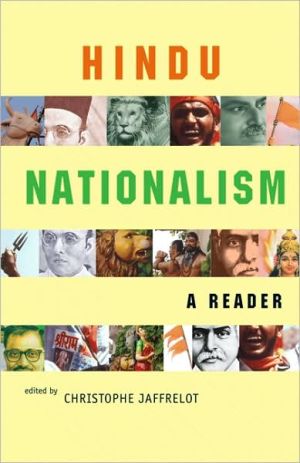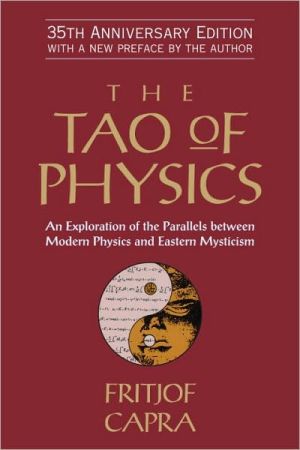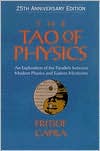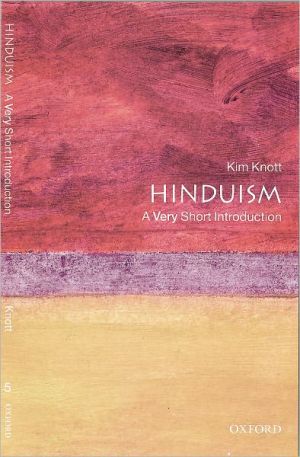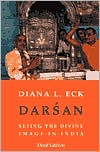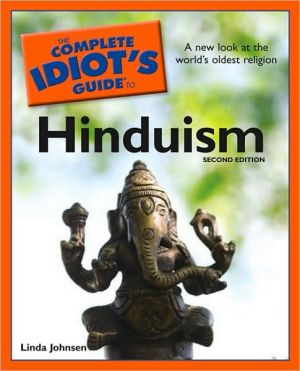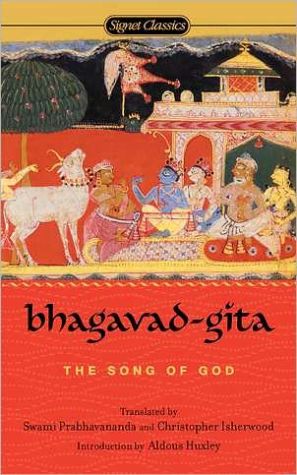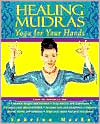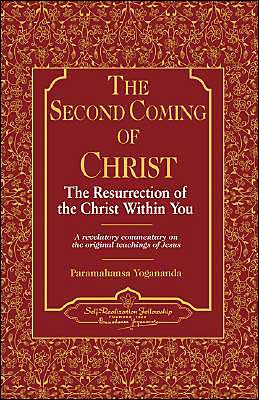Hindu Nationalism: A Reader
Hindu nationalism came to world attention in 1998, when the Hindu nationalist Bharatiya Janata Party (BJP) won national elections in India. Although the BJP was defeated nationally in 2004, it continues to govern large Indian states, and the movement it represents remains a major force in the world's largest democracy. This book presents the thought of the founding fathers and key intellectual leaders of Hindu nationalism from the time of the British Raj, through the independence period, to...
Search in google:
"Hindu Nationalism: A Reader is an extraordinarily well-researched, well-thought-out, and useful anthology. The selection of reading material is terrific. There is nothing of comparable scope available yet."--Pratap Bhanu Mehta, author of The Burden of Democracy"As the foremost expert on Hindu nationalism, Jaffrelot has employed his impressive knowledge to produce a comprehensive and well-organized volume that is likely to become the seminal sourcebook on the subject for many years to come."--Thomas Blom Hansen, author of The Saffron Wave: Democracy and Hindu Nationalism in Modern India Brian K. Pennington - Religious Studies Review No similar collection of primary materials exists, but now no other is necessary.
Hindu Nationalism A Reader \ \ Princeton University Press \ Copyright © 2007 Princeton University\ All right reserved.\ ISBN: 978-0-691-13098-9 \ \ \ Introduction The Invention of an Ethnic Nationalism \ The Hindu nationalist movement started to monopolize the front pages of Indian newspapers in the 1990s when the political party that represented it in the political arena, the Bharatiya Janata Party (BJP-which translates roughly as Indian People's Party), rose to power. From 2 seats in the Lok Sabha, the lower house of the Indian parliament, the BJP increased its tally to 88 in 1989, 120 in 1991, 161 in 1996-at which time it became the largest party in that assembly-and to 178 in 1998. At that point it was in a position to form a coalition government, an achievement it repeated after the 1999 mid-term elections. For the first time in Indian history, Hindu nationalism had managed to take over power. The BJP and its allies remained in office for five full years, until 2004.\ The general public discovered Hindu nationalism in operation over these years. But it had of course already been active in Indian politics and society for decades; in fact, this ism is one of the oldest ideological streams in India. It took concrete shape in the 1920s and even harks back to more nascent shapes in the nineteenth century. As a movement, too, Hindu nationalism is heir to a long tradition. Its main incarnation today, the Rashtriya Swayamsevak Sangh (RSS-or the National Volunteer Corps), was founded in 1925, soon after the firstIndian communist party, and before the first Indian socialist party. In fact, Hindu nationalism runs parallel to the dominant Indian political tradition of the Congress Party, which Gandhi transformed into a mass organization in the 1920s. Indeed, Hindu nationalism crystallized as an ideology and as a movement exactly at the time when the Congress became imbued with Gandhi's principles and grew into a mass movement. It then developed an alternative political culture to the dominant idiom in Indian politics, not only because it rejected non-violence as a legitimate and effective modus operandi against the British in the wake of the discourse of Bal Gangadhar Tilak (1856-1920) and his apologia in favour of a Hindu tradition of violent action, but also because it rejected the Gandhian conception of the Indian nation.\ Mahatma Gandhi looked at the Indian nation as, ideally, a harmonious collection of religious communities all placed on an equal footing. He promoted a syncretic and spiritual brand of the Hindu religion in which all creeds were bound to merge, or converge. Even though the leaders of India's minorities-especially Muslims-resisted this universalist appeal-in part because Gandhi articulated his views in a thoroughly Hindu style-the Mahatma insisted till the end that he spoke on behalf of all communities and that the Congress represented them all. In the early 1920s he even presided over the destiny of the Khilafat Committee, which had been founded to defend the Khilafat, an institution challenged after the defeat of the Ottoman empire in the First World War.\ Gandhi's universalist definition of the Indian nation echoed that of the man he regarded as his guru in politics, Gopal Krishna Gokhale (1866-1915), and, more generally speaking, of the first generation of Congress leaders. For the founders of Congress, the Indian nation was to be defined according to the territorial criterion, not on the basis of cultural features: it encompassed all those who happened to live within the borders of British India. Therefore, it was not perceived as being within Congress's purview to deal with religious issues which, in fact, were often social issues-such as child marriage and widow re-marriage-all such issues being those that came under the personal laws of different denominations. Moreover, the early Congress had started for this latter purpose a National Social Conference which met at the same time and in the same place as Congress did, during its annual session, but as a separate body. In contrast with the founders of Congress, Gandhi acknowledged religious identities in the public sphere, even as he viewed the nation as an amalgamation of many different communities. In the 1920s and after, however, the legacy of the first-generation Congress leaders was still pursued and deepened by major Congress Party figures: the Nehrus, i.e. Motilal Nehru (1861-1931) and his son, Jawaharlal Nehru (1889-1964), who advocated a liberal nation-building process based on individuals, not groups. For Motilal, who was elected president of the Congress in 1919 and 1928, and for Jawaharlal, who-before independence-occupied the same post in 1929, 1936, and 1946, and who was to become Gandhi's spiritual son, the construction of the Indian nation could only be rooted in secular, individual identities. The Nehrus represented a variant of the universalist standpoint, quite different from that embodied by Gandhi.\ Hindu nationalism, like Muslim separatism (a movement which in India was formed around the same time), rejected both versions of the universalist view of nationalism articulated by Congress. This ideology assumed that India's national identity was summarized by Hinduism, the dominant creed which, according to the British census, represented about 70 per cent of the population. Indian culture was to be defined as Hindu culture, and the minorities were to be assimilated by their paying allegiance to the symbols and mainstays of the majority as those of the nation. For Congressmen like Nehru this ideology-like that of the Muslim League or of Sikh separatists-had nothing to do with nationalism. They branded it with the derogatory term 'communalism'. But in fact the doctrine that was to become known by the name 'Hindutva' fulfilled the criteria of ethnic nationalism. Its motto, 'Hindu, Hindi, Hindustan', echoed many other European nationalisms based on religious identity, a common language, or even racial feeling.\ All the same, the essential characteristics of Hinduism scarcely lent themselves to such an 'ism'. This is, first, because Hinduism has no 'book' which can truly be said to serve as a common reference point. As Louis Renou points out, in Hinduism 'religious books can be described as books written for the use of a sect.' Moreover, Hinduism has often been described not as a religion but as a 'conglomeration of sects'. In fact the term 'Hindu' derives from the name of a river, the Indus; it was used successively by the Achaemenids, the Greeks, and the Muslims to denote the population living beyond that river, but till the medieval period it was not appropriated by the people themselves. A 'Hindu' consciousness apparently found its first expression in the seventeenth and eighteenth centuries in the empire of Shivaji, and then in the Maratha confederacy. But the conquests of the Marathas in the direction of the Gangetic plain 'did not imply the existence of a sense of the religious war based on ethnic or communal consciousness'; they resulted from a motivation that was ritual in character- to restore to the Hindus certain holy places, such as Varanasi, which were revered throughout India. The development of Hindu nationalism is therefore a modern phenomenon that has developed on the basis of strategies of ideology-building, and despite the original characteristics of a diverse set of practices clubbed under the rubric of Hinduism.\ An Ideological Reaction to the Other: From Reform to Revivalism in the Nineteenth Century\ The first expression of Hindu mobilization emerged in the nineteenth century as an ideological reaction to European domination and gave birth to what came to be known as 'neo-Hinduism'. To begin with, Europeans fascinated the local intelligentsia. In Bengal, where the British first settled, the East India Company used the services not only of compradores but also of the local literati, who came from the Hindu upper castes-these bhadralok, who were mostly Brahmins and, as a result, a new elite of upper-caste British-trained white-collar workers took shape. This intelligentsia often admired Britain for its remarkable scientific, technical, legal, and social achievements.\ Yet most members of this intelligentsia also regarded the West as a threat. They were inclined to reform their traditions along modern lines but not to the extent that they would abandon or even disown them; in fact they often wanted to reform these traditions in order to save them. Reformists, therefore, became revivalists by pretending that, in emulating the West, they were only restoring to pristine purity their own traditions via eliminating later accretions.\ Within the Hindu milieu this transition from reform to revivalism took place in the course of the nineteenth century. This is well illustrated by the contrast between the Brahmo Samaj and a later-but not unrelated-organization, the Arya Samaj. The former was founded in 1828 by Ram Mohan Roy (1772-1833), the renowned Bengali Brahmin who had been employed by the East India Company and who looked at the British presence in India as a providential development. Roy supported Western reformist ideas, including the abolition of sati. At the same time, he was very critical of the proselytizing work of Western missionaries. He steadfastly vindicated Hinduism against Christian expansionism, though in the reformist way. He admitted that missionaries were right when they stigmatized polytheism, the caste system and the condition of Hindu women. But he argued that these retrograde practices were latter accretions in Hinduism, that in its original form Hinduism did not lay itself open to such opprobrium. It had ignored idol worship-in fact it was even more monotheistic than Christianity, which admitted the Trinity-and it was an egalitarian creed emphasizing unmediated access between the individual and God. Roy argued that he had discovered all these virtues in the Upanishads- a late addition to Vedanta, the most recent part of the Veda. He suggested that, according to these sacred texts, each man is endowed with an atma, which is nothing other than a part of Brahma-the divine substance that supports the world. Therefore, the Vedic religion relied on an unmediated relation between man and God. He fought with Unitarian missionaries to hammer home this point during long public debates. The notion of a Vedic 'golden age' when Hinduism was superior to Christianity can be seen to crystallize at this time. This idea was embodied in the doctrine of the Brahmo Samaj (Society of Brahma), the organization he founded in 1828 and which survived Roy's death in 1833 (in London, where he had travelled as the first major Hindu reformer).\ The Brahmo Samaj attracted Hindu reformists from various regions, including the Bombay Presidency. This was the region from which Swami Dayananda Saraswati came. Dayananda was a Gujarati Brahmin who had embraced sanyas (asceticism). He travelled to Calcutta in 1873, meeting Keshab Chandra Sen-the most famous Brahmo Samaji leader of the time-who had just returned from England and was especially critical of the moral decay of that otherwise modern country. Sen promoted the idea that India was technically less advanced but spiritually superior.\ Dayananda Saraswati capitalized on the intellectual legacy of Roy and Sen in the 1870s, but he also took it several steps further, and in a somewhat different direction. While the Brahmo Samajis focused on the religious dimension of the Vedic 'golden age', Dayananda argued that, in addition to its spiritual glory, Indian antiquity was imbued with cultural and social greatness. The Vedic epoch was in his construction no longer embodied only in spirituality but also in a people-in its culture and its land. Dayananda maintained that the 'Aryas' of the Vedas formed the autochthonous people of Bharat, the sacred land below the Himalayas. They had been endowed by their god with the most perfect language, Sanskrit, the mother of all languages. This claim was strengthened by British Orientalism, whose most famous eighteenth-century exponent William Jones argued that it was the fount of an Indo-European family of languages. The idea that Europe's languages originated in Sanskrit had by this time become widespread. Last, but not least, Dayananda depicted Aryan society as endowed with robust egalitarian values. He did not ignore the caste system, but he reinterpreted it, arguing that, to begin with, this social system did not rely on hereditary hierarchical relations but on a merit-based division of labour, each varna fulfilling complementary functions. In the original Aryan society, for Dayananda, children were assigned to different varnas by their gurus according to their aptitude and inclination, a novel idea which reflected the influence upon him of Western individualism.\ In fact, Dayananda's revivalism inaugurated a specific combination of stigmatization and emulation of the threatening 'Other'. In contrast to the old reformists à la Ram Mohan Roy, Dayananda did not look upon British colonialism as a providential development but rather as posing a threat to Hindu civilization, including its caste system. In order to defuse this threat Dayananda recommended some emulation of the West. In this respect he followed Roy. His idea of reform was not to make India like the West, but to make its standards acceptably Western. His effort was to dissuade the British from changing Hindu customs by law, as well as to dissuade Hindus from admiring the West and/or converting to Christianity. This was best done by arguing that what fascinated Hindus about the West existed already, deeply buried, in their own ancestral traditions. Dayananda's interest was thus to emulate the West in order to more effectively resist its influence.\ It followed that the conversion of Hindus-including the Untouchables-to Christianity was perceived by Dayananda as a challenge to Hinduism. By the end of his life he introduced a ritual of reconversion-something no one could find in the Hindu scriptures as having previously existed. For this purpose he adapted the old ceremony of shuddhi, by which upper-caste Hindus who had been defiled could reintegrate with their caste. Shuddhi was therefore a purification procedure which Dayananda transformed into a reconversion technique, drawing inspiration from Christianity. Dayananda presided over the 'shuddhization' of a few Christian converts who wished to return to Hinduism during his lifetime, but even at that time, and more so after his death, the prime target of the Shuddhi movement's disciples were Muslims and Sikhs.\ Dayananda founded the Arya Samaj in 1875, in Punjab, the province where Hindus, more than anywhere else, felt a strong sense of vulnerability because of their demographic weakness vis-à-vis Muslims (51 per cent of the local population) and Sikhs (7.5 per cent). After Dayananda's death the Arya Samaj continued to develop in Punjab and became politicized.\ The Political Turn: The Hindu Sabhas Movement\ In Punjab the Arya Samaj attracted upper-caste notables who were involved in trade and commerce. This social milieu appreciated the sect's reformist creed because it did not recognize any sort of supremacy by Brahmins-on the contrary it denied the role of Brahmins as intermediaries between man and God. Hitherto, Brahmins had here claimed to occupy the upper rungs of society, even though the merchant castes had, in fact, become the dominant force in society.\ (Continues...)\ \ \ \ \ Excerpted from Hindu Nationalism\ Copyright © 2007 by Princeton University. Excerpted by permission.\ All rights reserved. No part of this excerpt may be reproduced or reprinted without permission in writing from the publisher.\ Excerpts are provided by Dial-A-Book Inc. solely for the personal use of visitors to this web site. \ \
Acknowledgements xi Copyright Statement xiii PART 1: INTRODUCTION: THE INVENTION OF AN ETHNIC NATIONALISM 1 Introduction: The Invention of an Ethnic Nationalism 3 An Ideological Reaction to the Other: From Reform to Revivalism in the Nineteenth Century 6 The Political Turn: The Hindu Sabhas Movement 10 The Hindu Sangathan Movement: Hindu Nationalism Crystallizes 12 The Maharashtrian Crucible of Hindu Nationalism 14 The Sangh Parivar Takes Shape 17 Hindu Nationalism and Political Strategy 19 PART 2: THE MAKING AND RESHAPING OF HINDU NATIONALIST IDEOLOGY 27 Chapter 1: Swami Dayananda Saraswati 29 Two Extracts from The Light of Truth (Satyarth Prakash) 31 Chapter 2: R.B. Lal Chand 38 Extract from Self-Abnegation in Politics 40 Chapter 3: Har Bilas Sarda 50 Two Chapters from Hindu Superiority: An Attempt to Determine the Position of the Hindu Race in the Scale of Nations 51 SOCIAL SYSTEM 51 FOREIGN RELATIONS 56 Chapter 4: Madan Mohan Malaviya and Lala Lajpat Rai 61 Presidential Addresses at Two Hindu Mahasabha Annual Meetings 64 MADAN MOHAN MALAVIYA: PRESIDENTIAL ADDRESS, AS REPORTED (1923) 64 LALA LAJPAT RAI'S PRESIDENTIAL ADDRESS, AS REPORTED (1925) 69 Chapter 5: Swami Shraddhananda 77 Extract from Hindu Sangathan: Saviour of the Dying Race 79 Chapter 6: Vinayak Damodar Savarkar 85 Extract from Hindutva: Who is a Hindu? 87 Chapter 7: M.S. Golwalkar 97 Extracts from We or Our Nationhood Defined 98 Extracts from Bunch of Thoughts 117 Chapter 8: Deendayal Upadhyaya 139 Two Extracts from Integral Humanism 141 Chapter 9: Balraj Madhok 158 Extracts from Indianization? What, Why and How 159 PART 3: HINDU NATIONALIST ISSUES 173 Chapter 10: The RSS and Politics 175 Extract from K.R. Malkani, The RSS Story 179 Extract from Sri Balasaheb Deoras Answers Questions 188 L.K. Advani's Concluding Statement at the National Executive Meeting of the BJP, 18 September 2005 189 Chapter 11: Jammu & Kashmir 193 Extract of a Speech by Shyama Prasad Mookerjee, in the Lok Sabha, on 7 August 1952 195 Preface to BJP on Kashmir 207 Chapter 12: The National Language 218 Extracts from Bharatiya Jana Sangh, Party Documents Vol. 5: Resolutions on Education, etc. and Party Affairs 220 Chapter 13: Conversion and the Arithmetic of Religious Communities 233 Lala Lajpat Rai on Dalits and Conversions 235 Extract from Raj Eshwar, Paravartan (Back to Hinduism): Why and How 244 Chapter 14: Reservation and Social Justice 255 Extract from RSS Resolves: Full Text of Resolutions from 1950 to 1983 258 Extracts from 'BJP Election Manifesto', 1991 Lok Sabha Elections 259 Extract from 'BJP Election Manifesto', 1996 Lok Sabha Elections 261 Extract from 'BJP Election Manifesto', 1998 Lok Sabha Elections 263 Extract from 'NDA Election Manifesto', 1999 Lok Sabha Elections 267 Extract from 'NDA Election Manifesto', 2004 Lok Sabha Elections 268 Chapter 15: Education 269 Extracts from Murli Manohar Joshi, 'Reorienting Education' 271 Chapter 16: Ayodhya, the Babri Masjid, and the Ramjanmabhumi Dispute 279 Extract from an Interview of L.K. Advani 282 Extract from L.K. Advani, 'The Ayodhya Movement' 289 Chapter 17: Defence 299 Extract from Jaswant Singh, Defending India 302 Chapter 18: Secularism 313 Extract from Atal Behari Vajpayee, 'The Bane of Pseudo-Secularism' 315 Extract from Atal Behari Vajpayee, 'Secularism, the Indian Concept' 318 Chapter 19: The Economy 342 Extract from S. Gurumurthy, 'Swadeshi and Nationalism' 345 Extract from Arun Shourie, 'This is India's Moment, But It's Only a Moment, Can We Grasp It?' 354 Chapter 20: The Diaspora and Hindu Nationalism 361 Documents on the California Textbooks Controversy 364 Bibliography 370
\ Culture and ReligionJaffrelot has given us a valuable reference tool. It is possibly one for those who already have some sense of what the significance of Hindu nationalism has been rather than for the absolute beginner. Its strength lies in the clarity of the trajectory it depicts.\ — Shabum Tejani\ \ \ \ \ Religious Studies Review - Brian K. Pennington\ No similar collection of primary materials exists, but now no other is necessary.\ \ \ Culture and ReligionJaffrelot has given us a valuable reference tool. It is possibly one for those who already have some sense of what the significance of Hindu nationalism has been rather than for the absolute beginner. Its strength lies in the clarity of the trajectory it depicts.\ \ \ \ \ Religious Studies ReviewNo similar collection of primary materials exists, but now no other is necessary.\ — Brian K. Pennington\ \
